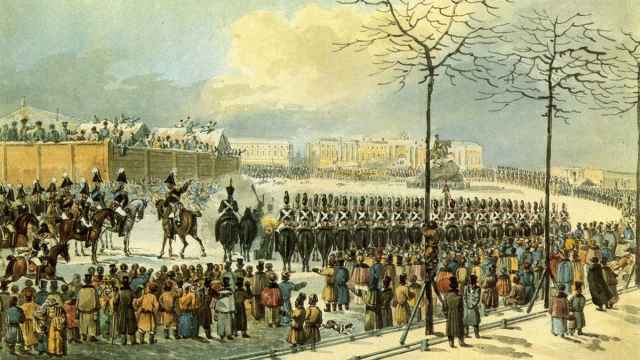Russian consumer behavior has evolved over the past 10 years such that per capita footwear purchases have increased by one pair to reach nearly three pairs per year. At the same time, however, experts predict that over the next seven years, additional consumption growth will similarly not exceed more than one pair per capita. Nonetheless, the footwear market is estimated at $25 billion annually, making it the third-largest consumer market segment behind food and clothing.
While fashionistas are eager to focus on eye-catching decollete and miniskirts, when it comes to footwear stores, especially in the regions, we see all the same sturdy heels and black shoes. When footwear is purchased with a long service life in mind, consumers are not focused on designer styles.
Europeans annually purchase about five pairs of footwear while Americans buy seven. They largely do not think about what they will have to go compromise in exchange for buying their next pair of shoes. By and large, Russians also do not think about this. They are glad to buy, although the assortment of most stores is mostly focused on practical and functional footwear rather than designer fashions.
While European footwear stores offer a wider array in terms of color selection, including demi-season footwear, in the spring and autumn Russians prefer black, brown, grey or dark blue shoes. This is related to the weather conditions. It is difficult to take proper care of colorful footwear in the in-between seasons. But Russians like a more diverse range of colors and styles in the summer.
Understanding of the Russian footwear market helps explain some of the main market trends today. In the Soviet Union, footwear was largely domestically made, and the production volumes reached tens of millions of pairs annually. People bought and wore this sturdy but bland Soviet footwear, but they also tried to get their hands on more fashionable, attractive and interesting imported footwear, which was very difficult to obtain. This explains why no footwear design school has emerged in Russia. You need to have traditions like in Italy and Germany, where footwear studios and footwear factories have developed over decades.
In the 1990s, Russia was swamped with cheap, poor-quality footwear from China that people were forced to buy for lack of a better alternative. Many domestic plants sharply cut back on production, losing out to the competition. In the mid-1990s, new footwear factories began to appear in Russia. Following the sharp devaluation of the ruble after the 1998 default, they received a competitive advantage over imported footwear, the prices of which skyrocketed. The new Russian producers paid little attention to design, as their objective was to satisfy the demand for quality, reliable and durable footwear that simultaneously was affordable.
In the early 2000s, quality brands from Europe began to appear in Russia. Most important, a very different type of footwear appeared: collections that were renewed each season and current models that reflected the latest trends in fashion. Faced with this situation, Russian producers began to lose ground, as they had a limited selection of materials. Moreover, the effect of the devaluation of the ruble had dissipated. It was during this period that a different consumer culture began to emerge — people began to pay more attention to design and collections.
Today, about 80 percent of Russia's footwear market is imported, with China accounting for a lion's share of these imports. China accounts for 11 billion of the 13 billion pairs of footwear produced annually worldwide. The total volume of footwear produced in Russia in 2012 was 104 million pairs. Half of this volume was state-commissioned production.
On the whole, there is a positive trend. Over the past decade, the annual per capita consumption of footwear has increased by one pair. This increase was largely driven by women buyers, who continue to account for 70 percent of adult footwear purchases. On average, they buy three or four pairs a year, but they remain far behind European fashionistas. One can dream about high-heeled pumps becoming the rage in Russia outside of Moscow, but the fact remains that footwear is probably needed for going back and forth to work each day rather than for prancing around in restaurants.
Russia's immense geography plays a role in the formation of regional variations in consumer behavior. Moscow and St. Petersburg have rather slushy winters and the roads are often treated with de-icing chemicals. Thus, footwear made of velour or nubuck is not suitable for residents of these regions. In Siberia and the Urals, where winters are colder, snowier and drier, velour is highly popular because it retains heat and looks distinguished and attractive.
Residents of small regional cities are more conservative in their preferences because personal income is often lower and people purchase footwear that will be suitable for a variety of outfits. They also have to get around a lot by foot, which necessitates universal footwear that does not require special care and retains its appearances for a longer period of time.
The most dynamically developing segment of the footwear market is the medium-price range segment, which is at the forefront of the trend to add designer elements to functional footwear. Such footwear is not only affordable but also is created with an understanding of the latest trends in fashion.
Ten years ago, designer footwear appeared exclusively in the premium segment, but today eye-catching footwear is gradually finding its way into stores of the medium-price segment. New footwear is being introduced as a part of seasonal collections, which are regularly renewed. Periodically successful new models have sparked spontaneous demand, which increases the level of consumption.
As Russians' personal incomes rise and interaction with world design and fashion trends increases, consumers are gradually shifting their focus from the banal practical aspects of footwear to its aesthetic qualities. This demand can primarily be met by paying proper attention to the latest trends in footwear fashion and regularly introducing seasonal collections.
Anton Titov is CEO of Obuv Rossii.
A Message from The Moscow Times:
Dear readers,
We are facing unprecedented challenges. Russia's Prosecutor General's Office has designated The Moscow Times as an "undesirable" organization, criminalizing our work and putting our staff at risk of prosecution. This follows our earlier unjust labeling as a "foreign agent."
These actions are direct attempts to silence independent journalism in Russia. The authorities claim our work "discredits the decisions of the Russian leadership." We see things differently: we strive to provide accurate, unbiased reporting on Russia.
We, the journalists of The Moscow Times, refuse to be silenced. But to continue our work, we need your help.
Your support, no matter how small, makes a world of difference. If you can, please support us monthly starting from just $2. It's quick to set up, and every contribution makes a significant impact.
By supporting The Moscow Times, you're defending open, independent journalism in the face of repression. Thank you for standing with us.
Remind me later.





